Review Summary
Expert Rating
Lenovo-owned Motorola’s smartphones used to be the de facto choice in the affordable smartphones segment, offering solid value for money, thanks to a combination of stock Android and decent hardware. In recent times though, rivals like Xiaomi, Realme etc might have stolen some of the thunder away, but the brand is definitely making its presence felt again.

Among the recent launches from the brand, the Moto One series is worth mentioning. Smartphones in this lineup kept the stock Android philosophy and focused on some key aspects of the device. For example, the Moto One Vision (review) was the first phone in India to come with a 21:9 aspect ratio screen. The Moto One Macro was a device with a focus on the macro sensor. The Moto One Power (review) came with a massive 5,000mAh battery and so on.
Now the company has come out with a new smartphone called the Motorola One Fusion+, which doesn’t focus on just one feature but appears to be more of an all rounder. With the One Fusion+, Motorola is giving a strong challenge to POCO, Xiaomi, Realme, and others. Has it succeeded? Read on to find out in this detailed review of the Motorola One Fusion+.
Verdict
If it’s quality you want from a mid-range smartphone, you cannot go wrong with the Motorola One Fusion+. Putting aside its weighty design, it checkmarks all the necessities that the competition is offering and improves on them to give a wholesome experience. It might have taken a while, but Motorola might have hit jackpot with the One Fusion+.
Design and display
The Motorola One Fusion+ is a heavy phone and that is quite likely the first thing you will notice as soon as you pop it out of the box. Surprisingly, the device is encased in clear plastic case straight out of the box, instead of the case being offered in a separate compartment like all other OEMs. In any case (pun intended), the phone itself is quite a looker and the design is not unlike previous Moto One series smartphones. On the back of the device is a quad-camera setup and the fingerprint sensor on the top-centre with the Motorola logo, very reminiscent of the Moto One Macro. We have received the Twilight Blue colour variant which is quite pleasing to look at with its dual-tone blue and black finish.
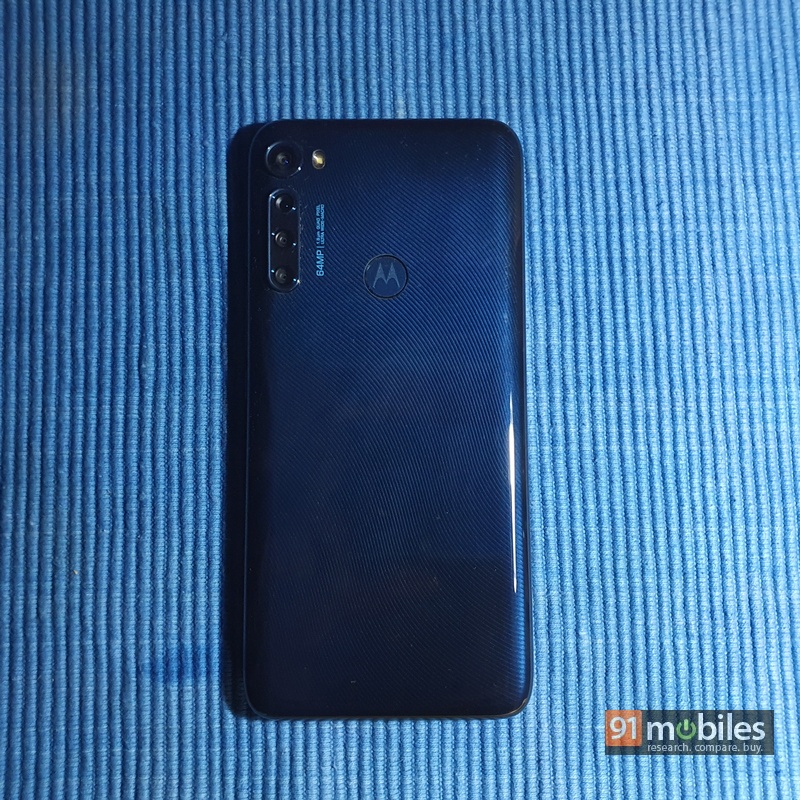
The front of the device, is, however, a first for Motorola phones. While pop-up selfie shooters have gone out of style and been replaced by punch-hole cameras, Motorola is embracing this trend with open arms. You get a notch-free display but the bezels surrounding the display are not exactly minuscule like you see on the likes of the Realme 6 Pro or the Redmi Note 9 Pro Max.
The chin on the phone is slightly larger than I would’ve liked, though it is not really a matter of complaint for most. As far as buttons go, the Motorola One Fusion+ has the usual volume rockers and power buttons, but also a textured dedicated Google Assistant button. On the bottom, the phone sports a headphone jack, a Type-C port, and a speaker grille. The slot for the pop-up mechanism is present on the top of the device as is the hybrid dual-SIM and microSD card slot.
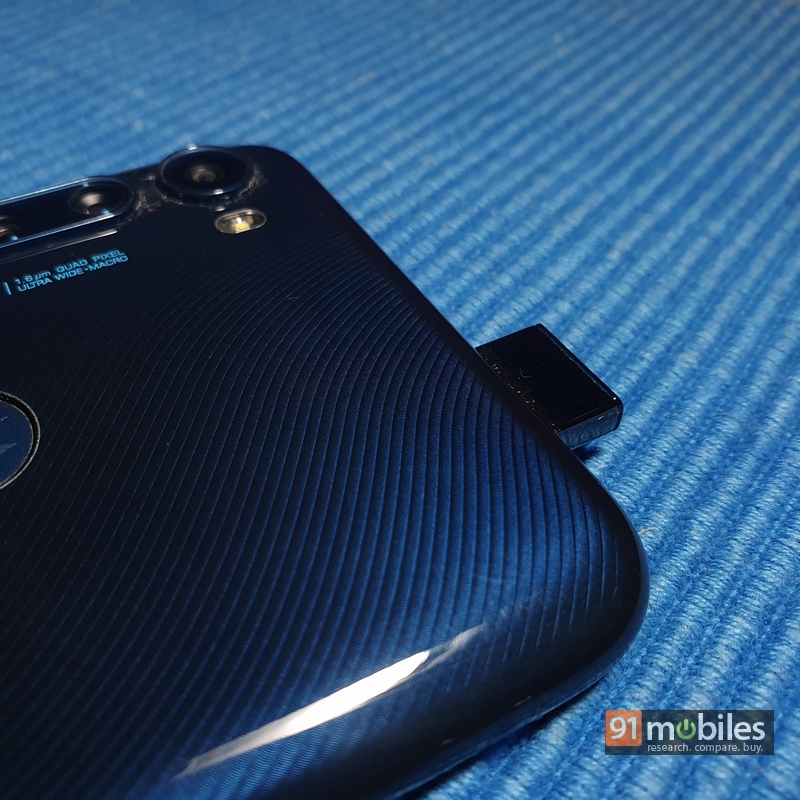
Motorola is touting that the Motorola One Fusion+ has a best-in-class display as compared to all its competitors. There is some merit to this claim as the Motorola One Fusion+ happens to be the only phone with HDR10 and DCI-P3 support in its price range. In layman’s terms, screens with HDR10 support will deliver more colour rich and bright content. Add to that support for DCI-P3 and the phone’s screen can display a wider range of colours than standard sRGB phones. The Fusion+’s display, which is 6.5-inch in size and offers FHD+ resolution, works as advertised. It is vibrant, bright and has good contrast ratios for an LCD panel.
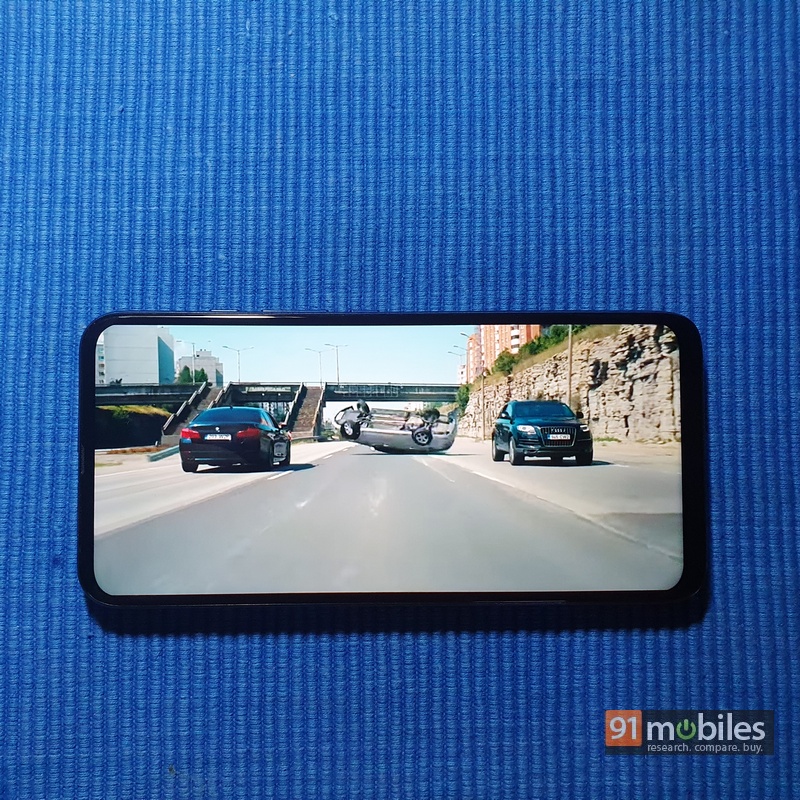
Not having any notch or punch hole to obstruct the view is definitely an added advantage. All in all, the Motorola One Fusion+ makes for a great viewing device whether it the sunny outdoors or the shaded indoors. Is a higher refresh screen too much of an ask after this? Well, that does depend from person to person. For someone who has not experienced a high refresh rate display before, the Fusion+ would definitely seem like a good experience. That being said, the Realme 6 Pro’s (review) 90Hz panel isn’t too far behind in terms of colours and vividness, and is definitely a more fluid experience than the Fusion+. If it was up to me, I would pick the Realme 6 Pro or POCO X2 (review) over the Fusion+ simply because I prefer a smoother experience to a more colourful one. To each their own I guess.
Cameras
As is the trend today in mid-range smartphones, the Motorola One Fusion+ features a quad-camera setup. The primary camera is a 64MP sensor which is supported by an 8MP ultra-wide lens, a 5MP macro sensor, and a 2MP depth sensor. The selfie shooter housed in the pop-up mechanism has a 16MP sensor. Nearly all phones that are in competition with the Fusion+ have 64MP quad-camera setups and it made sense for Motorola to include it on the device. The question is how good is the camera on the Fusion+.

Let’s start with the main camera, which is a Samsung ISOCELL Bright GW1 sensor that is present in the likes of the Realme 6 Pro, Galaxy M31 (review), POCO X2 and others. As per usual, the Fusion+ snaps 16MP pixel-binned images by default. In my experience, most of the people will not need to click a 64MP shot but I guess if you really want to, you have that option. However, and I have seen this on a great many 64MP camera phones, the quality of the shot does improve leaps and bounds over a standard pixel-binned photo. That is the case for the Fusion+ as well. In a few cases, the exposure of a shot is increased if you click it in the 64MP UHD mode and the detailing grows ever so slightly. Most of the time 64MP shots will take more time to render when trying to preview them and the result will not be different than the pixel-binned shot.

The standard photos clicked by the primary sensor are quite colour rich and slightly oversaturated. The dynamic range and exposure handling works fine most of the time but the former gets iffy when the sun is too harsh. There were also instances of over-sharpening but only a few times. In general, I was quite satisfied with the quality of photos being churned out. The Fusion+ has a dedicated Night Mode which helps in bringing out more details in areas of low lighting. It worked better than I had hoped but the mode does take its sweet time to click a photo that is worthwhile. In general, details and exposure are handled well for a sub-20,000 phone.
Other sensors on the phone include the 8MP ultra-wide lens which brings in a lot more into the frame but the colour temperatures go askew. Even so, it does a great job of keeping the details. The macro sensor will only work when a ton of light is thrown at it and even then, only a few of the photos will actually be usable at all. I have never been a fan of macro sensors in the budget and mid-range category and the Fusion+ has not changed my mind. The depth sensor works quite well with accurate background separation and a nice, soft blur which is easy on the eye.
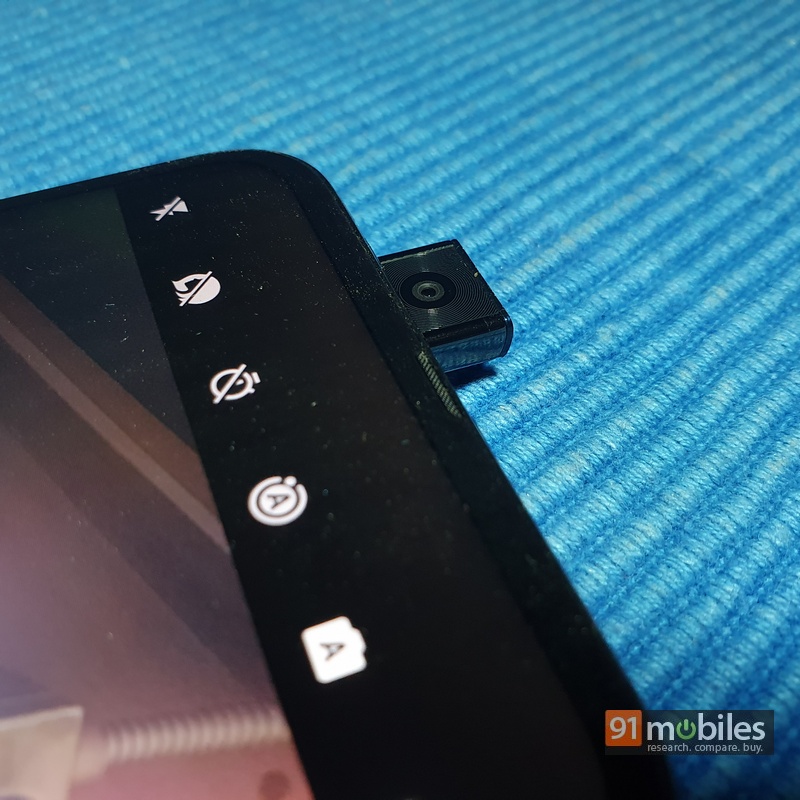
Then there is the pop-up selfie camera, the first that I have seen in the segment since the Realme X (review). The 16MP sensor works fine in both day and in night scenarios and it also a good portrait mode as well.
Performance and software
With the Snapdragon 730G SoC powering the phone, there is little scope for the device not performing up to the expected standards. The POCO X2 also has the same SoC while other competitors like the Redmi Note 9 Pro Max and the Realme 6 Pro are on the Snapdragon 720G platform. The Fusion+ has a single 6GB RAM + 128GB storage configuration which can be expanded to 1TB using a microSD card.

If benchmarks are something that reveal if a device is really as good as it is being shown on paper, then you would be happy to know that the Motorola One Fusion+ is not going to disappoint. As per, AnTuTu the phone scored a respectable 274,684 while on Geekbench the score was 549 for single-core and 1747 for multi-core. As a comparison, the POCO X2 has scores of 279,444 on AnTuTu and 542 and 1696 for single-core and multi-core on Geekbench respectively.
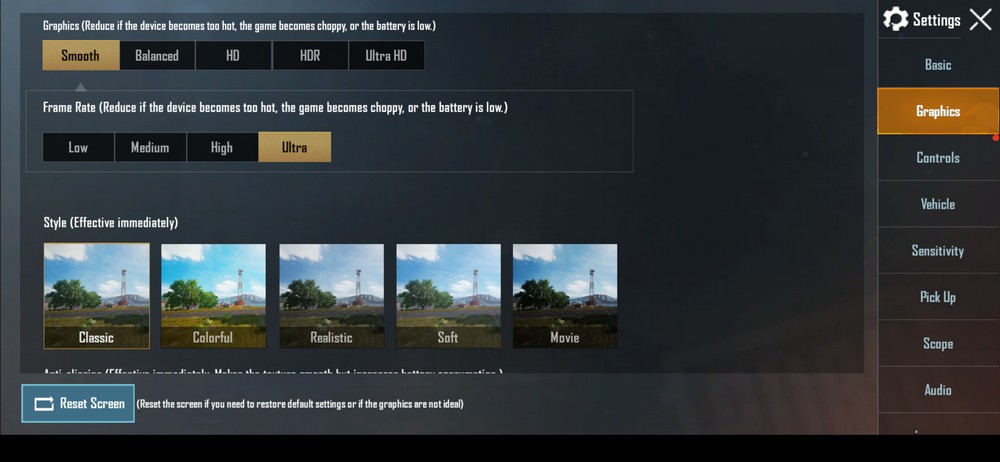
On the matter of running PUBG Mobile, I was surprised that the device did not show the ‘Extreme’ frame rate option on any of the graphics settings. This was not the case for either the Realme 6 Pro or the POCO X2. Apart from that, the HDR graphics option was also labelled as “coming soon”, which was again not the case on either of the two competitors mentioned above. Otherwise, the game runs just about fine on the Fusion+ with a noticeable lag coming in after about 1.5 hours of continuous gaming.
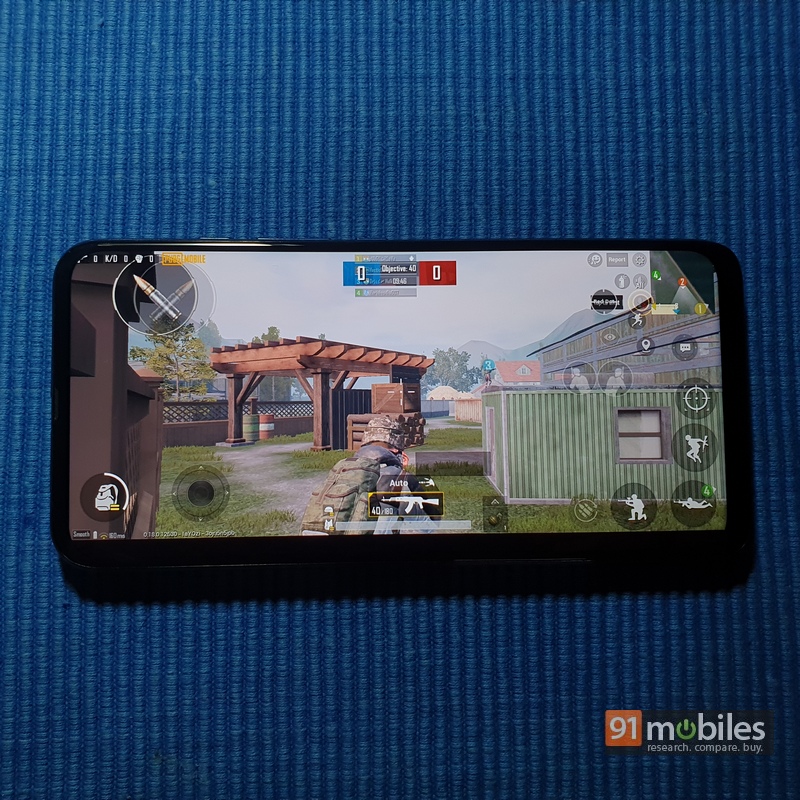
The device has a capable bottom-firing speaker and also has a headphone jack for those who are still in the wired audio world. As far as authentication is concerned, the Motorola One Fusion+ has a capacitive fingerprint sensor on the back and unlocks in an instant. The face authentication, while not as secure, is quite reliable and lets you unlock the device even when the lighting is not very good. Call and microphone quality work as expected.

On the software side of things, Motorola is sticking to it guns of providing a clean stock Android experience for its users. This means almost zero bloatware, an assurance of at least one platform refresh, no multiple apps for things such as Gallery or Browser, and in general a very fluid experience. I have always been a fan of Motorola’s software philosophy and my opinion has remained strong with the Motorola One Fusion+ as well. On a side note, the phone does have navigation gestures on by default but they are not smooth enough to be chosen over the traditional three-button navigation system. You can change back to the buttons in the settings menu
Battery
With a massive 5,000mAh battery, the Motorola One Fusion+ is no slouch. It is on par with Redmi Note 9 Pro Max and ahead of what most of the competition such as the POCO X2 or the Realme 6 Pro is offering . Our standard battery loop test, which involves running a video on loop at half brightness and half volume, showed that the device lasted nearly 25 hours before giving out. However, in terms of charging speeds, the Motorola One Fusion+ offers 18W charging as compared to 30W on the Realme 6 Pro and 27W on the POCO X2. As a result, it takes more than 2 hours to charge the Fusion+ while the time is much shorter on the other two, although it is partly due to smaller batteries on the competition as well. In terms of real-world usage, the Motorola One Fusion+ will last you for more than a day without breaking a sweat.
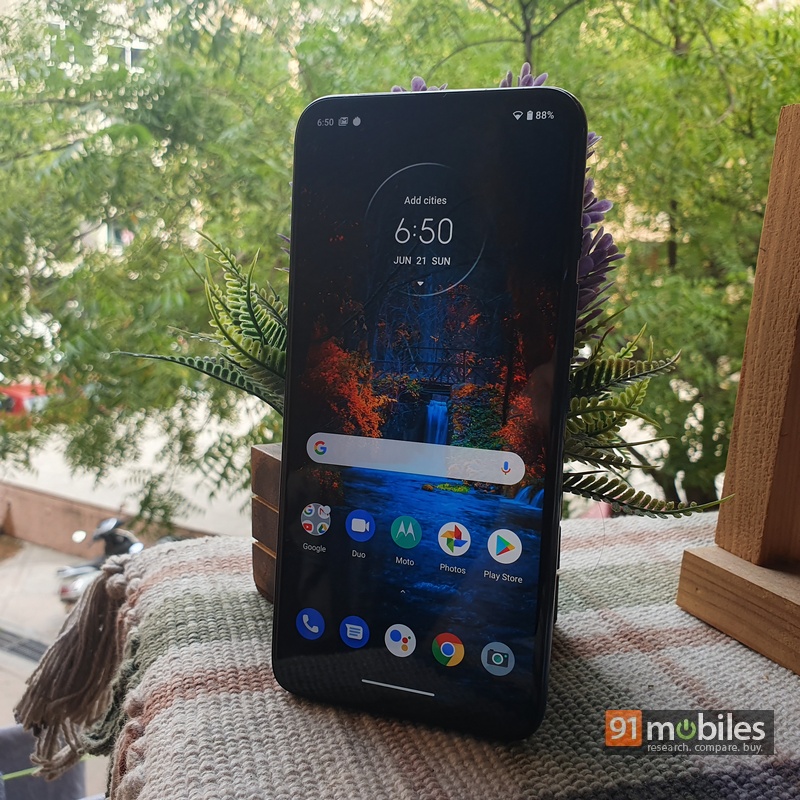
Final Verdict
Motorola has done a great job at delivering a quality smartphone experience for an affordable price. I guess the main advantage that the Fusion+ has over its rivals is the fact that it has all the same hardware-related features and offers a clean stock Android experience. It has an equal or greater battery than its competitors and the same 64MP quad-camera layout. While a higher refresh display would have been a welcome change, the fact that it supports HDR10 and a DCI-P3 colour gamut should make up for it. There is the pop-up selfie shooter which renders a disruption-free display, though I’m of the opinion that a punch-hole camera is a better option. Even so, there appears to be very little I can say that could dissuade you from buying the device unless you plan on gaming with it.
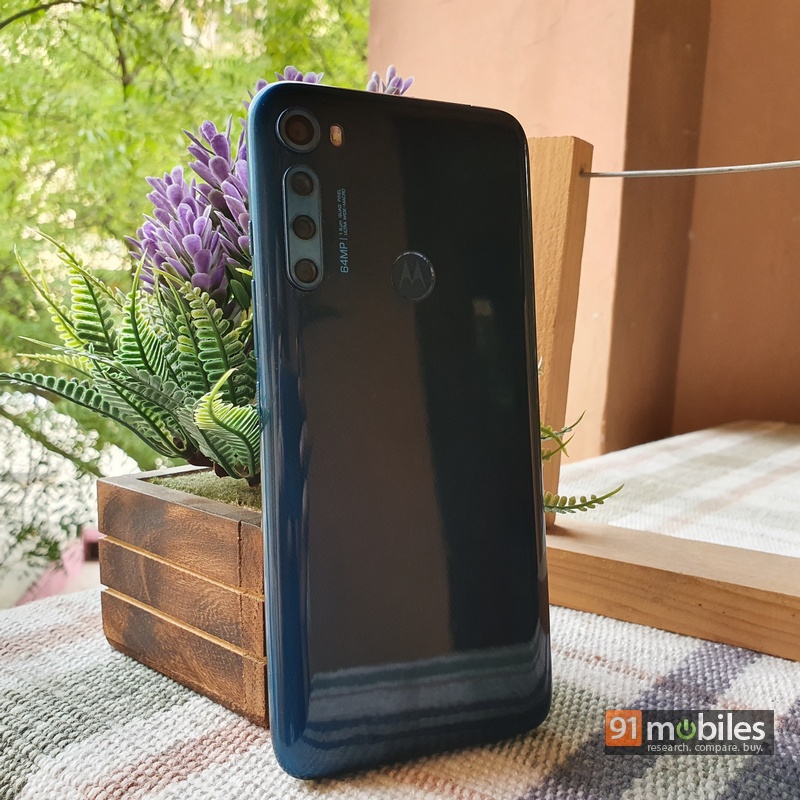
Editor’s rating: 4 / 5
Pros
- Excellent display quality
- Clean Android and no bloatware
- Smooth performance
- Decent cameras
Cons
- Heavy
- The pop-up camera could get damaged over time
- Could use a higher refresh rate display
 Motorola One Fusion Plus Motorola One Fusion Plus | vs |  POCO X2 POCO X2 |
 Motorola One Fusion Plus Motorola One Fusion Plus | vs |  realme 6 Pro realme 6 Pro |


































